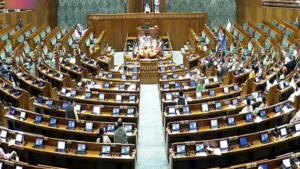The Central Board of Directors of the Reserve Bank of India (RBI) has approved the transfer of Rs 2.11 lakh crore as a dividend to the Government of India for the financial year 2023-24. This announcement was made after the Central Board of Directors meeting on 22 May 2024 in Mumbai. This is the highest-ever dividend despite the Contingent Buffer Risk being increased to 6.5% for 2023-24.
Contingent Buffer Risk
Contingent Buffer Risk refers to the reserve money that the RBI maintains to meet its liabilities, including day-to-day operations and statutory duties like monetary and foreign exchange functions. It is a component of the Economic Capital Framework of the RBI.
Economic Capital Framework
The Economic Capital Framework determines the RBI’s profit distribution, accounting for risk provisions under section 47 of the RBI Act 1934. In 2018, a committee headed by Bimal Jalan reviewed this framework and recommended a Contingent Buffer Risk of 5.5% to 6.5% of the RBI’s balance sheet. This recommendation was adopted on 26 August 2019. Due to the COVID-19 pandemic, the buffer was maintained at 5.5% from 2018-19 to 2021-22, increased to 6% in 2022-23, and to 6.5% in 2023-24.
Impact on Government Revenue
The RBI’s dividend will be recorded in the government’s account for the financial year 2024-25. The government had initially budgeted a dividend of Rs 1.02 lakh crore in the interim budget of 2024-25. The higher-than-expected dividend will enhance government spending, positively impacting the Indian economy.
Central Board of RBI
The Central Board of the RBI, its highest decision-making body, comprises the RBI Governor, four Deputy Governors, four Directors (one from each Local Board), ten Directors nominated by the Central Government, and two Government officials. The board operates under the provisions of the RBI Act 1934. The RBI was established under this act and commenced operations on 1 April 1935.




 Prime Minister Releases Commemorative Po...
Prime Minister Releases Commemorative Po...
 Parliament Passes SHANTI Bill, AERB Gets...
Parliament Passes SHANTI Bill, AERB Gets...
 Viksit Bharat G RAM G Bill Passed in Lo...
Viksit Bharat G RAM G Bill Passed in Lo...







